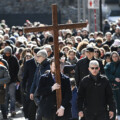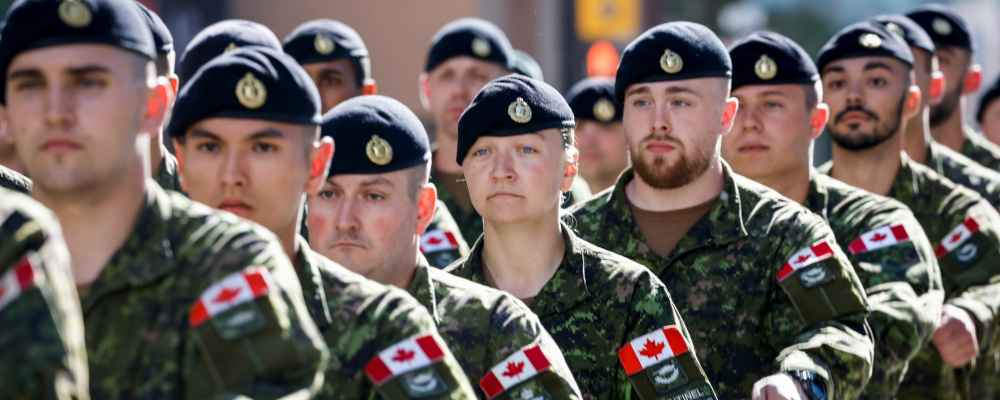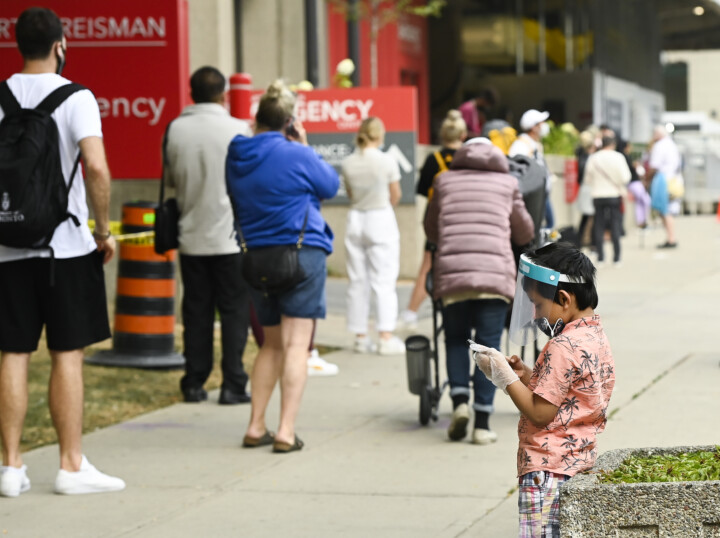On Thursday, the Chief of the Defence Staff (CDS), General Wayne Eyre, made a tacit acknowledgment of what most people in the Canadian Armed Forces (CAF) have long known—the military is in serious trouble and unable to sustain its current commitments in the present state. While it is easy enough to point at the depleted state of its core capabilities like aircraft and ships, the evidence of the crisis is evident everywhere. Just last week it was revealed that 4500 members and their families are on a waitlist for base housing, a basic necessity for many personnel’s lives.
In most other countries, this would have been a major scandal with political leaders resigning. Yet it barely made a ripple in the press. While CDS Eyre has outlined a plan to fix the situation, there are serious doubts that he will be able to achieve this outcome, partly because the problem is so severe, and partly because he does not have the necessary tools to do so.
Many factors are behind how the CAF reached this inflection point. While COVID has been a major issue for retention, many of these trends far predate the pandemic. A key component is related to funding. Simply too little money has been spent on the department since the end of the Cold War, and it has now caught up to the military.
Recruitment is one such area and a major source of the personnel problems the military currently faces. Moreover, the department’s procedures and functions have become particularly problematic and had a detrimental impact on the lives of its soldiers. This is not a new challenge, as finding the balance to sustain the CAF during peacetime and war has been fought since the 1950s.
However, many soldiers feel that their administration has become turgid and unresponsive to their needs—getting basic paperwork through can be difficult at times, housing is nearly impossible to obtain, and the cost of relocation, an unfortunate reality for many members, is far too high. Furthermore many aspects of cultural reform have been poorly implemented, despite the critical nature of this effort considering the systemic issues surrounding sexual harassment. But it has alienated members and risks further damaging already sagging morale. Large segments of the personnel are disenchanted and have become unwilling to continue in their roles. They simply cannot continue to sacrifice their own well-being or that of their families and have instead “voted with their feet” and left the forces.
Particularly problematic is the capital base of the armed forces, from physical facilities to the actual planes, ships, vehicles, and the like. Everywhere one looks, the CAF is crumbling due to significant underinvestment. Moreover, the basic tools that soldiers need to conduct their mission are simply falling apart.
For example, the Royal Canadian Navy’s frigates—12 vessels that constitute the vast majority of the navy’s ability to protect the country—are in a dilapidated state. The fleet is now roughly over twenty-five years old and starting to show its age after years of hard deployments worldwide. Seven of the ships are currently in yards undergoing refits or repairs, with two on, which means fewer deployments available for crews. Unable to serve on their assigned systems for too long, many sailors become disillusioned and leave the service. It’s a problem experienced by many within the CAF and not just limited to the Navy.
While some individuals see too few deployments, others are often over-committed. Due to undermanning, a small number of key specialists are utilized unsustainably. Some individuals spend six or more months away from home, only to be sent away for another deployment six months later. In some of these roles, like aircraft maintainers or sensor technicians, undermanning has reached 50 percent of the authorized strength. These specialists burn out and leave the service, leaving fewer individuals to shoulder the burden and exacerbating the “death spiral.” Eventually, there will be nobody available to man these critical positions.
Political representatives continually claim how they support the forces and point to policies and programs that purport to show just that. But this cannot disguise the plain reality that faces CAF members every day. The 2017 white paper Strong, Secure and Engaged was supposed to remedy these issues—yet the situation is fundamentally worse now than before. Money has not materialized, and even the recent announcement of a $5 billion infusion over the next six years only represents a two percent increase in the force’s budget a year. None of it is earmarked for areas that will improve serving members’ situations. Personnel are simply disenchanted by the whole situation, feeling that the government does not truly care about their institution.
This is not the first instance of a similar crisis in living memory, however. In the mid-1990s, the CAF faced similar organizational pressures, albeit for different reasons. It was undergoing a drawdown from the end of the Cold War, even as it was undertaking unsustainable missions simultaneously in places like the former Yugoslavia, Rwanda, and Haiti. The National Defence leadership attempted to implement an operational pause in 1996. Despite their best efforts, the military was still sent out on additional missions, such as Canada’s support of the Stabilization Force in Bosnia and Herzegovina. It was only in the 2000s that the situation was temporarily stabilized, thanks to a major infusion of funding and support midway through the decade.
A similar situation may negate General Eyre’s plans. Given the ongoing war in Ukraine and growing tensions in the Western Pacific around Taiwan, it’s easy to see a situation where the CAF may be called upon to send more troops into the world. This week it announced the deployment of 40 combat engineers to Poland in order to train Ukrainian soldiers, and it is easy to envision more soldiers being deployed in the future.
Simply put, there are no easy answers to this problem. What is needed, however, is for the government to provide strong leadership in order to fix this situation. Unfortunately, given this government’s seven-year track record on the defence file, this seems unlikely to happen. Actually reconstituting the military will be a costly enterprise, given the perilous state of the CAF. Moreover, rather than proscribing solutions that are completely out of step with the military culture, any reforms must focus on service-members needs to deal with them effectively. Pouring cash into this existing system will be highly inefficient and may even be counterproductive in the end.
This all suggests that the CAF, and the government writ large, may require a more fundamental change to how foreign policy is guided, administered, and funded. The orthodoxy of today is clearly not working, and unless Canada makes a major change, the current situation will only worsen—to the point where we may become truly defenceless. And that is not in anyone’s interest.
Recommended for You

Apartment units are now 81 percent of new housing construction as more Canadians in 20s live with parents and median renter gets older

‘This is going to get very messy’: Will Canada drop religious protections from its hate speech laws?

Send The Hub your health-care horror stories!

Quebec’s health reforms are controversial—and exactly the shake-up Canadian health-care needs




